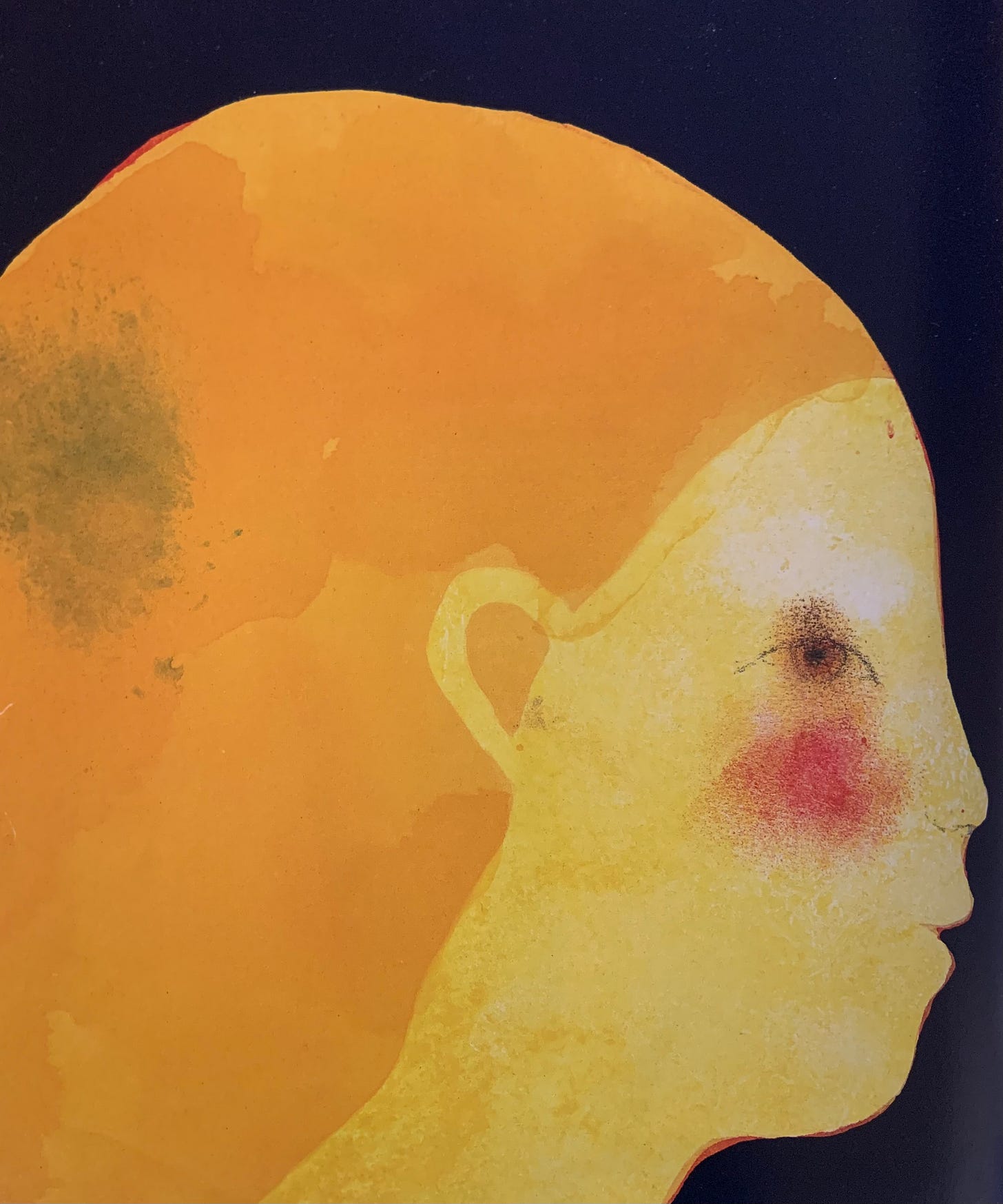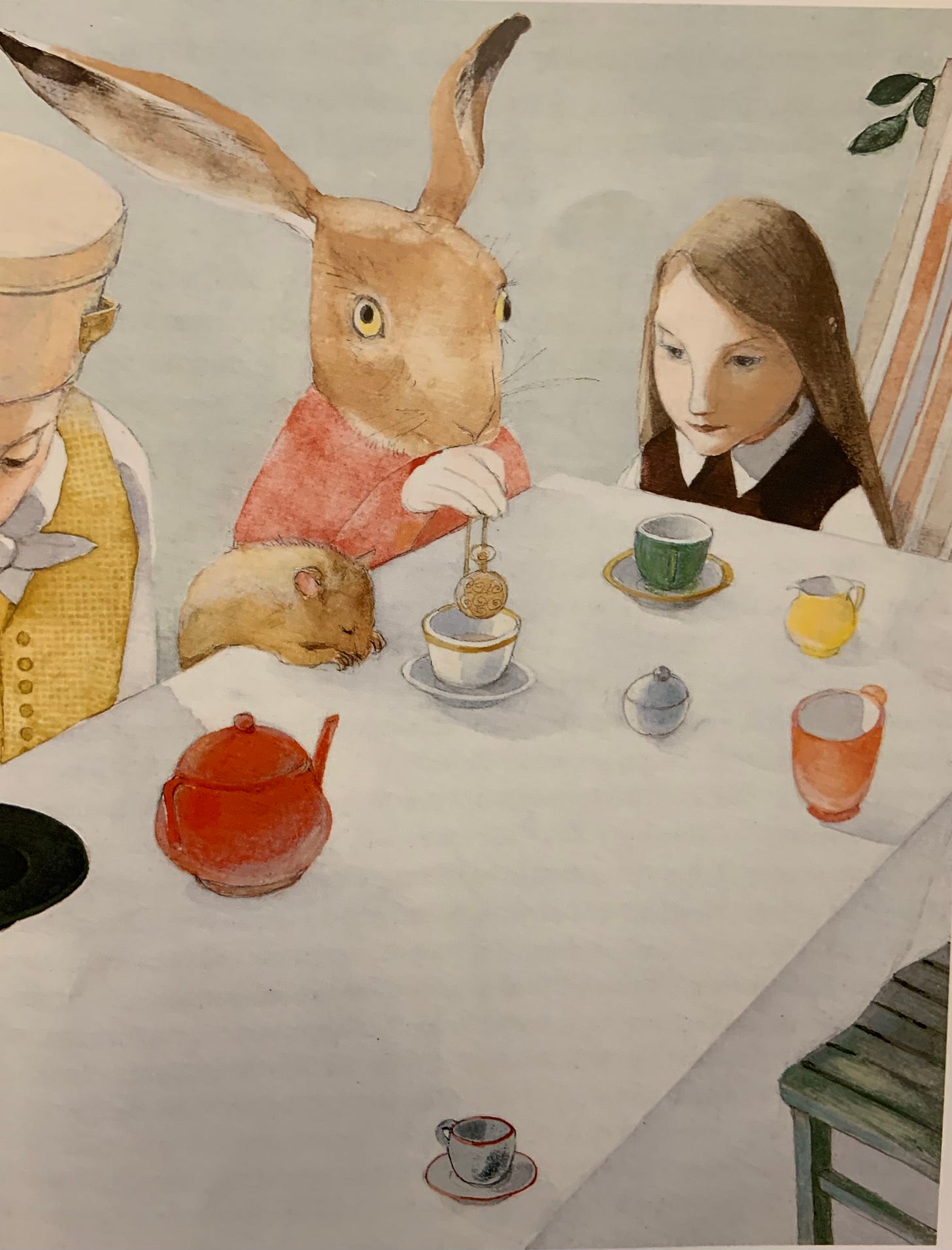Marie Kondo in Wonderland
Plus: Stevie Wonder's 'Happy Birthday' song, More Dennis Quaid, and Harry Dean Stanton Oddest Acting Role
Greetings, dear readers. Welcome to the latest edition of Tilting West. We have been producing this newsletter a little over a month, and we truly appreciate your patience and support as we make changes and improve the publication that arrives in your email inbox every Friday.
In today’s edition we celebrate the wondrous Stevie Wonder and his bouncy reinvention of the “Happy Birthday” song, revisit the movie career of Dennis Quaid, and a reader even gives a shout-out to one of Harry Dean Stanton’s oddest acting roles in a career full of them.
But first, let’s get right to it and explore one of the unlikeliest literary pairings you’ll ever find: the Japanese-born and raised Marie Kondo and a little 19th century English girl named Alice.
The Big Story: Marie Kondo’s Favorite Book
We hav been doing a variety of home improvement projects of late, which means that cash is flooding out of our accounts, relative strangers are spending quality time with us in our house, and generally things have been in a “loud uproar,” as my mother liked to say. But it’s all been worth it.
Inevitably we have had to make hard, sometimes even painful decisions on what stuff to keep and what stuff to throw out. To refresh my thinking on these matters I decided to re-read Kondo’s transformative bestseller The Life-Changing Magic of Tidying Up—13 million copies sold, 45 translations worldwide—that made her, by far, the reigning superstar of the global tidying industry, an industry she basically created.
On this second reading, however, I discovered something that either I had missed the first time around or paid no attention to if I had seen it. The petite, powerhouse 39-year-old founder of KonMari Media absolutely adores Alice’s Adventures in Wonderland!
While discussing her home library and how she wished to trim the number of volumes in it, this is what she says in Life-Changing Magic: “One day I decided to take a closer look at what I had. I started with books that I considered taboo to discard. In my case, first on the list was Alice in Wonderland which I have read repeatedly since grade one. Books like this, which fall into one’s personal Book Hall of Fame, are simple to identify.”
The total number of books you should keep in your home at any one time, according to Marie, is 30. Her famous technique for knowing what to keep and what to throw out is the same for books as it is for other items: If, by holding it in your hand, it “sparks joy” in your heart, that’s a keeper. If not, maybe it’s time to donate it to the library or a local thrift store.
Alice’s Adventures in Wonderland, written by Lewis Carroll and first published in 1865, is her ultimate keeper, her favorite book, numero uno in her personal Book Hall of Fame. Another book often associated with her is The Art of Discarding, a Japanese work that when she was a teenager inspired her to become a professional tidier and organizing consultant. She cites it twice in Life-Changing Magic, it’s mentioned on her website, and reporters often refer to it in articles about her in the media. But, as influential as it was at one time, she admits she no longer owns a copy; into the discard pile it went.
Not so with Alice. It’s not going anywhere. And it’s a sure bet that her three young children, when they get a little older, will listen to their mother read it to them and share in the sparks of joy that the manic, absurd, fantastical doings of the White Rabbit, March Hare, Mad Hatter and all the rest of them still give her.
Marie Doesn’t Just Like Alice, She IS Alice
Sparked by Kondo’s lead, I slipped Alice from a downstairs bookshelf—she’d be disappointed, it contains far more than 30 books—and started re-reading it myself. At the same time I was also making my way through Life-Changing Magic. While doing this I could not help but notice all the similarities between the fictional Alice and the real-life Marie:
• Both are exceedingly polite. One bows, the other curtsies. Although Alice does confess she has trouble showing proper manners when she is falling and falling down the rabbit hole: “Fancy curtsying as you’re falling through the air!” she says. “Do you think you could manage it?”
• Both are trying to make sense of a world gone mad. “We’re all mad here,” the Cheshire Cat tells Alice. “I’m mad. You’re mad.” “How do you know I’m mad?” Alice responds. “You must be,” says the Cat, “or you wouldn’t have come here.” Kondo must feel the same way when she walks into the home of a client who has 60 toothbrushes in safekeeping, or another with 20,000 cotton swabs, or yet another with 30 boxes of plastic food wrap in her kitchen pantry. “It is interesting how the human mind tries to make sense out of the nonsensical,” notes Kondo in words that Alice would surely have seconded if she wasn’t so busy trying to figure out where the Cat and his disappearing smile went to.
• Both must cope with “muchness,” a concept that the drowsy Dormouse tries to explain to Alice when he starts listing all the things that begin with the letter M: “Such as mousetraps and the moon and memory and muchness—you know you say things are ‘much of a muchness’—did you ever see such a thing as a drawing of a muchness?” While Alice cannot quite picture it, Marie surely can. Too much muchness is how she makes a living.
One area Marie could have taught Alice a thing or two is about proper folding techniques. She is known as a master folder of clothes; it’s central to her organizational philosophy. “The key is to store things standing up rather than laid flat,” she advises. “The goal is to fold each piece of clothing into a simple, smooth rectangle.”
Poor Alice could have used such advice when the madcap Duchess unexpectedly pitches her squirming little baby into the girl’s arms. Alice’s impromptu haphazard solution is “to twist [the baby] up into a sort of knot, and then keep tight hold of its right ear and left foot, so as to prevent its undoing itself.” Then again maybe even Kondo would have had problems when the “queer-shaped little creature” in Alice’s arms morphs into a pig.
If you haven’t opened the pages of Alice in a while, or if you’ve never done so, rest assured it is standing up strong against the ravages of time. It’s still funny, still delightful, and would make a wonderful gift for an Alice or Alex in your life. (For a little bit more on Alice, be sure to read to the end of the newsletter as she will magically—like the Cat!—reappear.)
Mailbag
Stevie Wonder’s “Happy Birthday”
We love hearing from our wonderful readers and what their own “favorite things” are. Last week’s article on Soul Train and The Greatest Night in Pop generated praise for a man who starred on both of them, Stevie Wonder. Dan Crouch writes, “Speaking of Stevie Wonder, we often sing the chorus to his song “Happy Birthday” as an antidote to the traditional “Happy Birthday” song, which sometimes sounds like a dirge. Wonder's is a much happier sound—what a concept! Great music by a great artist.”
Dennis Quaid Redux
Also rekindling memories and expert reader knowledge was our piece on Dennis Quaid: “I remember Quaid in Breaking Away,” writes Max Lateiner. “He was very young in the movie [age 25]. Scott Glenn was also in the western Silverado.”
Another contributor, David Nelson adds, “Dennis Quaid was great as part of the wonderful ensemble of actors in The Right Stuff. But his most intriguing films were Breaking Away and Frequency, your typical father-and-son drama involving a time-travel adventure wrapped around a hunt for a serial killer. Plus the 1962 Mets. Really fun. One of Harry Dean Stanton’s weirder roles (in a career full of odd parts) was on an episode of Two and a Half Men. He was part of Charlie Harper’s (Charlie Sheen) men’s counseling group that gathered to discuss their problems over cigars and whiskey. Harry Dean was the senior member along with Sean Penn and Elvis Costello. He only had one line but it was the best. (The episode was in the second season, “Back Off Mary Poppins.”)
And Now, More of Alice
Part of the fun of Alice in Wonderland are the illustrations, for, after all, “what is the use of a book without pictures or conversation?” The illustrations above are by John Tenniel, the original artist for the first edition who worked with Lewis Carroll on getting the pictures just right. There have been so many interpretations of Alice over the years. Here are five such visions of her by artists in recent decades:
Next week: Nora Ephron!












